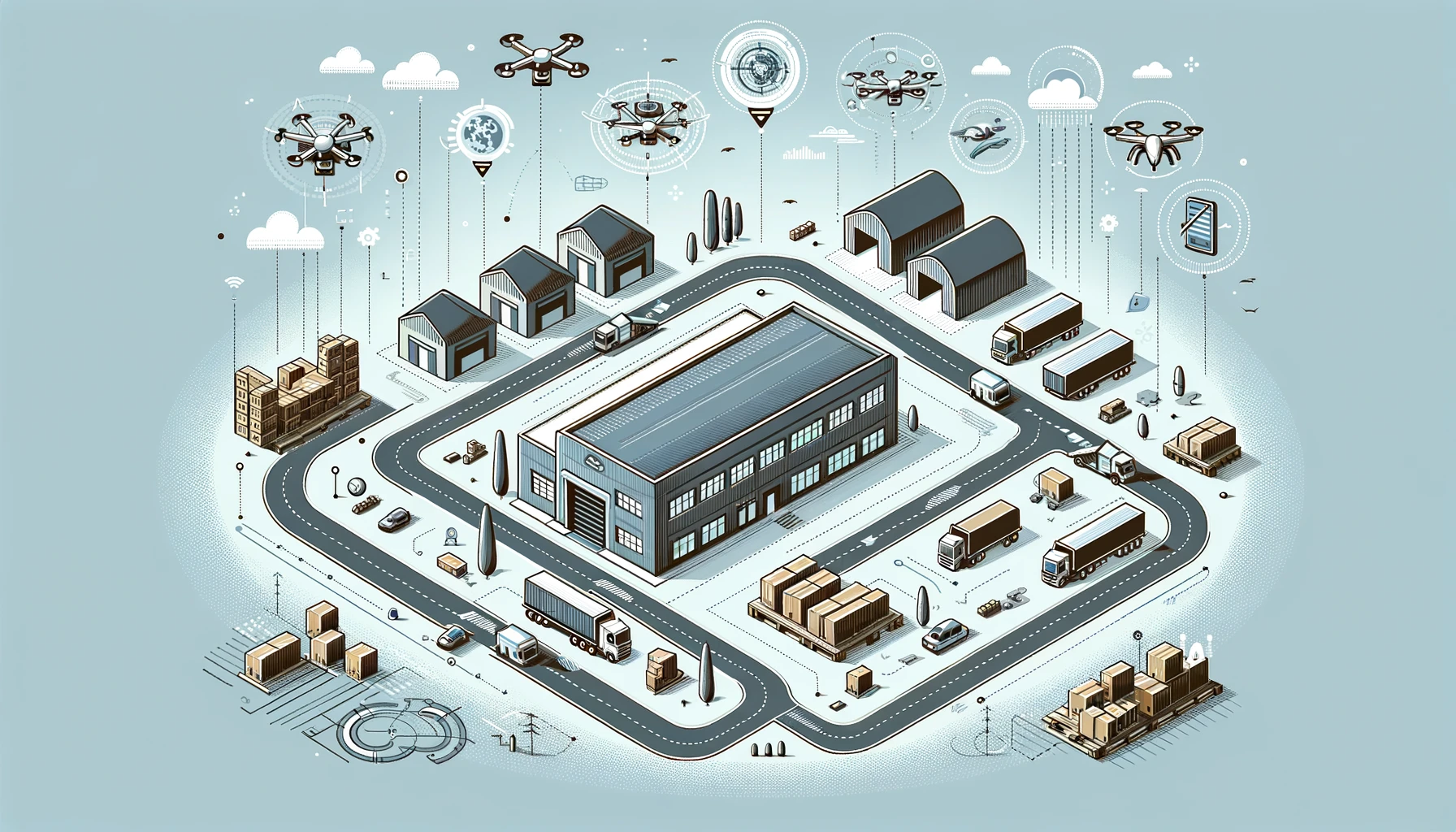Strategic Supply Chain Optimization Techniques

Unlock efficiency with strategic supply chain management for robust business growth.
Maximizing Efficiency in Operations
In the realm of business growth, the efficiency of your strategic supply chain can be the linchpin of success. To enhance operations and drive productivity, it’s crucial to adopt a holistic approach that intertwines technology, processes, and people.
Firstly, streamline your procurement. By leveraging integrated business solutions, you can reduce the time spent on sourcing materials and negotiate better terms with suppliers. A centralized purchasing system not only cuts costs but also provides clearer visibility into spending patterns, allowing for more strategic decision-making.
Inventory management is another cornerstone of an efficient supply chain. Employing AI tools for business can predict demand more accurately, preventing both stockouts and excess inventory. This balance is critical to maintaining cash flow and customer satisfaction. Consider implementing AI ERP systems for a more dynamic inventory control.

A crucial step is to enhance your logistics network. Optimizing routes and consolidating shipments can significantly reduce transportation costs and carbon footprint. Moreover, fostering a collaborative relationship with logistic partners can lead to shared savings and improved service levels.
Lastly, invest in your workforce. Training programs focused on human resource management can empower employees to make decisions that align with your strategic objectives, fostering a culture of continuous improvement.
To visualize the impact of these strategies, here’s a comparison of key performance indicators before and after implementation:
| Metric | Before Implementation | After Implementation | Improvement |
|---|---|---|---|
| Order Processing Time (hours) | 24 |
8 |
-66% |
| Order Error Rate (%) | 10 |
2 |
-80% |
| Customer Satisfaction Score (out of 10) | 7 |
9 |
+28.6% |
| Inventory Turnover Ratio | 5 |
8 |
+60% |
By applying these techniques, you can transform your supply chain into a streamlined, responsive asset that propels your business forward. Remember, an optimized supply chain is not just about cutting costs—it’s about adding value at every step, from supplier to customer.
Exploring the Benefits of a Streamlined Supply Network
The advantages of a well-oiled strategic supply chain are numerous, impacting various facets of your business. By refining your supply network, you’re not only boosting operational efficiency but also setting the stage for enhanced customer satisfaction and market adaptability.
When you streamline your supply chain, you’re essentially equipping your business with the agility to respond to market changes swiftly. This flexibility can be a game-changer in today’s volatile market conditions. Here’s a snapshot of the benefits you can expect:
- Reduced Operational Costs: Streamlining processes and eliminating redundancies lead to significant cost savings.
- Improved Quality Control: A tighter supply chain allows for better quality oversight and fewer defects.
- Enhanced Customer Service: With more reliable delivery times and fewer backorders, customer trust and loyalty grow.
- Increased Competitiveness: The ability to quickly adapt to market trends and consumer demands gives your business a competitive edge.
To put these benefits into perspective, consider the following table, which compares the operational aspects before and after streamlining your supply network:
| Aspect | Before Streamlining | After Streamlining | Impact |
|---|---|---|---|
| Lead Time | Longer lead times due to inefficiencies | Reduced lead times with efficient processes | Increased customer satisfaction |
| Costs | Higher due to waste and redundancies | Lower operational costs through optimization | Greater profitability |
| Flexibility | Limited ability to adapt to changes | Enhanced adaptability to market demands | Better competitive positioning |

By honing in on these areas, your company can experience a ripple effect of positive outcomes. A strategic supply chain is not just about moving products but about creating a seamless flow of value that resonates with every stakeholder involved.
In the next segment, we’ll dive into the steps to implement these strategies effectively, ensuring your supply chain is not just a business necessity but a pivotal growth driver.
The Backbone of Successful Businesses: Efficient Distribution Systems
Efficient distribution systems are the unsung heroes of successful businesses, especially when it comes to strategic supply chain management. The distribution phase, which involves getting your products to the customer, is critical. It’s where the rubber meets the road, and your business’s reputation is on the line with every delivery.
An optimized distribution system ensures that products reach the customers promptly and in perfect condition. This involves a delicate balance of transportation management, warehouse logistics, and technology to track and expedite shipments.
To achieve this, consider these steps to enhance your distribution strategy:
- Leverage Technology: Implement state-of-the-art ERP AI chatbots to streamline order fulfillment and customer service.
- Optimize Routes: Use advanced analytics to determine the most efficient delivery routes.
- Warehouse Management: Apply AI task managers for real-time inventory tracking and quicker turnaround.
- Carrier Collaboration: Work closely with carriers to negotiate better rates and ensure reliable delivery.
The difference an efficient distribution system can make is not to be underestimated. Let’s see how it fares when compared to a less optimized approach:
| Feature | Ozma | Zoho | Odoo |
|---|---|---|---|
| Real-time Shipment Tracking | ✓ | ✓ | ✓ |
| Predictive Analytics for Delivery | ✓ | x | x |
| Automated Carrier Selection | ✓ | x | x |
| Dynamic Routing Optimization | ✓ | x | x |
| Integrated Returns Management | ✓ | ✓ | x |

By investing time and resources into these areas, your company can achieve a robust and responsive distribution network. An excellent distribution system not only secures customer loyalty but also paves the way for scaling your operations to meet future demands.
As we go deeper into the realm of strategic supply chain management, you must keep in mind that each component of your supply chain is a building block to your business’s overall success. With a well-planned distribution system, you’re setting up a strong foundation for sustained growth and customer satisfaction.
Navigating the Complexities of Vendor Relationships
In the intricate dance of supply chain management, the relationship with vendors plays a pivotal role in a strategic supply chain. It’s about more than just negotiating the lowest price; it’s about building partnerships that foster innovation, reliability, and mutual growth. The right vendor relationships can become a source of competitive advantage and resilience in the face of market shifts.
To navigate these complexities, follow these steps:
- Selecting the Right Vendors: Look beyond cost to consider factors such as reliability, quality, and ethical practices.
- Communication is Key: Establish clear, consistent communication channels to address issues promptly and collaborate on improvements.
- Joint Planning: Work with vendors to forecast demand and plan for capacity, ensuring that both parties can meet future needs.
- Performance Metrics: Implement shared performance metrics to align vendor efforts with your strategic goals.
Let’s compare the characteristics of vendor relationships before and after strategic enhancements:
| Characteristic | Before Strategic Enhancements | After Strategic Enhancements | Outcome |
|---|---|---|---|
| Communication | Ad hoc and reactive | Structured and proactive | Stronger collaboration |
| Reliability | Inconsistent | High and consistent | Fewer disruptions |
| Innovation | Rare | Regular collaborative efforts | Continuous improvement |
| Cost Efficiency | Cost-driven | Value-driven | Long-term savings |

By fostering robust vendor relationships, your company can anticipate and mitigate risks, access new technologies, and adapt to changes with agility. Remember, your vendors are not just suppliers; they are strategic partners that can help you achieve excellence in your supply chain operations.
In essence, mastering vendor management within your strategic supply chain is about creating a symbiotic ecosystem where both parties thrive. It’s a delicate balance of give-and-take that, when done right, yields substantial rewards for your business.
As you continue to refine your supply chain strategy, keep these relationship-building tips in mind to ensure a network that is as strong as it is flexible, ready to take on the challenges of tomorrow’s marketplace.
Building a Resilient Supply Ecosystem for Competitive Edge
In today’s fast-paced market, building a resilient strategic supply chain is not just a necessity—it’s a competitive differentiator. A resilient supply ecosystem can weather disruptions, adapt to changes, and maintain operations under various pressures. But how do you build this resilience into your supply chain?
Start by diversifying your supplier base. This doesn’t just mean having more suppliers, but having them in different geographic locations. It’s like not putting all your eggs in one basket. If one area experiences a setback, your supply chain keeps moving because you have alternatives in place.
Next, invest in supply chain visibility. With the right technology, you can have a clear view of your entire supply chain. This allows you to identify risks early and respond quickly. A low-code ERP system can provide this level of insight without the need for complex programming.
Another key aspect is to build strong relationships with your suppliers. This goes beyond transactions; it’s about creating a partnership where both parties are invested in each other’s success. By doing so, you create a network that’s robust and cooperative.

Finally, keep a close eye on inventory levels and have a backup plan for critical components. This might mean keeping a safety stock or identifying alternative materials that could be used if necessary.
Building resilience in your strategic supply chain takes time and effort, but the payoff is significant. With a resilient supply ecosystem, you can not only survive unexpected challenges but also seize new opportunities that arise from them.
As you work towards creating a more resilient supply chain, remember that each step you take adds a layer of protection against the unpredictable. This isn’t just about avoiding risks; it’s about setting your business up to thrive in an ever-changing environment.
FAQs
What is a strategic supply chain?
A strategic supply chain refers to the proactive management of supply chain activities to maximize customer value and achieve a sustainable competitive advantage.
How can supply chain strategy improve business performance?
By optimizing logistics, inventory, and supplier relationships, a strategic supply chain enhances efficiency and responsiveness, leading to improved business performance.
What are the key components of a strategic supply chain?
Key components include demand planning, procurement, manufacturing, distribution, and collaboration with partners and suppliers.
How does technology impact strategic supply chain management?
Technology plays a pivotal role by providing real-time data, automating processes, and facilitating communication across the supply chain.
What are the best practices for developing a strategic supply chain plan?
Best practices include comprehensive market analysis, risk management, continuous improvement, and alignment with overall business objectives.
Read more about low-code platform ozma.io
What Is Supply Chain Strategy? Key Principles Explained
Strategic Supply Chain Management: Key Trends & Insights





